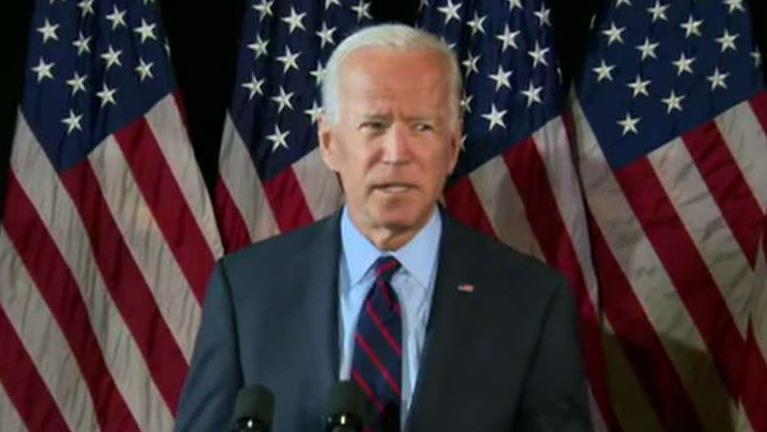2020 Dems' top trillion-dollar plans
Democratic candidates for the 2020 election are hoping to woo Americans through sweeping policy plans including the elimination of college debt and expanding Social Security — some of which carry hefty price tags.
Many Republicans have been critical of giving away too many freebies and undermining capitalism, and even democracy, and covering the sky-high costs of the Democrats proposals has become a point of criticism among their opponents — particularly when solutions come in the form of increased taxes.
The Congressional Budget Office said earlier this month that the federal budget deficit over the course of the first 11 months of the fiscal year was $1.06 trillion.
Here’s a look at some of the top trillion-dollar plans:
Green New Deal
The climate change plan known as the Green New Deal, which calls for massive investments in climate-friendly infrastructure to reduce greenhouse gas emissions to zero by 2050, could carry costs as high as $93 trillion over the course of 10 years.
One study found that the average American household could be on the hook for anywhere between $70,000 and $100,000 during the first year of the plan’s implementation with only slight reductions in the years that followed.
Medicare for All
Expanding the government-run Medicare program to everyone in the United States is among the priciest of the proposals put forward by 2020 Democrats. A bill to do so was authored by Vermont Sen. Sanders is supported by Massachusetts Sen. Elizabeth Warren.
An estimate from the Mercatus Center at George Mason University has pegged the cost of Sanders’ bill at about $32 trillion.
Climate change continued
California Sen. Kamala Harris released her own climate change plan, which would cost an estimated $10 trillion.
Former Texas lawmaker Beto O’Rourke released a $5 trillion plan in May.
New Jersey Sen. Cory Booker unveiled a $3 trillion plan.
Student loan debt forgiveness (Sanders)
Sanders’ $1.6 trillion student loan forgiveness program, which also calls for making U.S. public colleges tuition-free at an estimated total cost of $2.2 trillion, would be financed through a tax on Wall Street transactions, according to the Vermont senator.
Free college and student debt forgiveness (Warren)
Warren’s proposal for canceling student debt for some, and providing a universal free college program, carries an estimated price tag of $1.25 trillion during the course of a decade. She has said her ultra-millionaire tax could help fund the proposal.
Expanding Social Security
Warren also unveiled a plan to expand Social Security benefits, immediately giving all beneficiaries an extra $200 per month.
Estimates peg the cost of the proposal, which includes other measures to shore up the solvency of the program, at $1.1 trillion over a decade. It would also involve a $4.2 trillion tax hike over the same time period.
Infrastructure plan
Minnesota Sen. Amy Klobuchar detailed a $1 trillion plan to reform the nation’s infrastructure, in her first policy announcement after announcing her campaign for president.
The proposal calls for the use of federal money, tax subsidies and loans.
President Trump and Democrats came together around a $2 trillion infrastructure overhaul goal, though no progress has been made.
It’s worth noting that Trump passed a $1.5 trillion tax cut, which he signed into law at the end of 2017.
CLICK HERE TO READ MORE ON FOX BUSINESS
Many of the proposals rely on raising taxes on the country’s wealthiest residents and corporations for funding. However, as previously reported by FOX Business, the rich do not earn enough to fund progressive promises.
Currently, federal spending figures for 2020 through 2029 sit at $57 trillion, or 22.5 percent of GDP. Taking into account progressive promises, federal spending could rise to between $105 trillion to $149 trillion during the same time period – to as much as nearly 59 percent of GDP.
Taking every dollar earned by people with incomes above $200,000 would not be enough to pay for the proposals that have been floated, the report found. A flat tax rate of 100 percent on those with incomes of $1 million or more would not even raise enough to eliminate the current federal deficit.




















